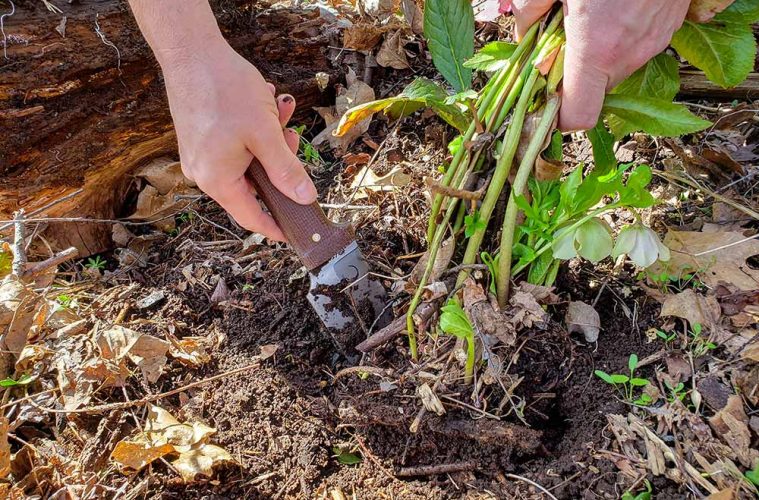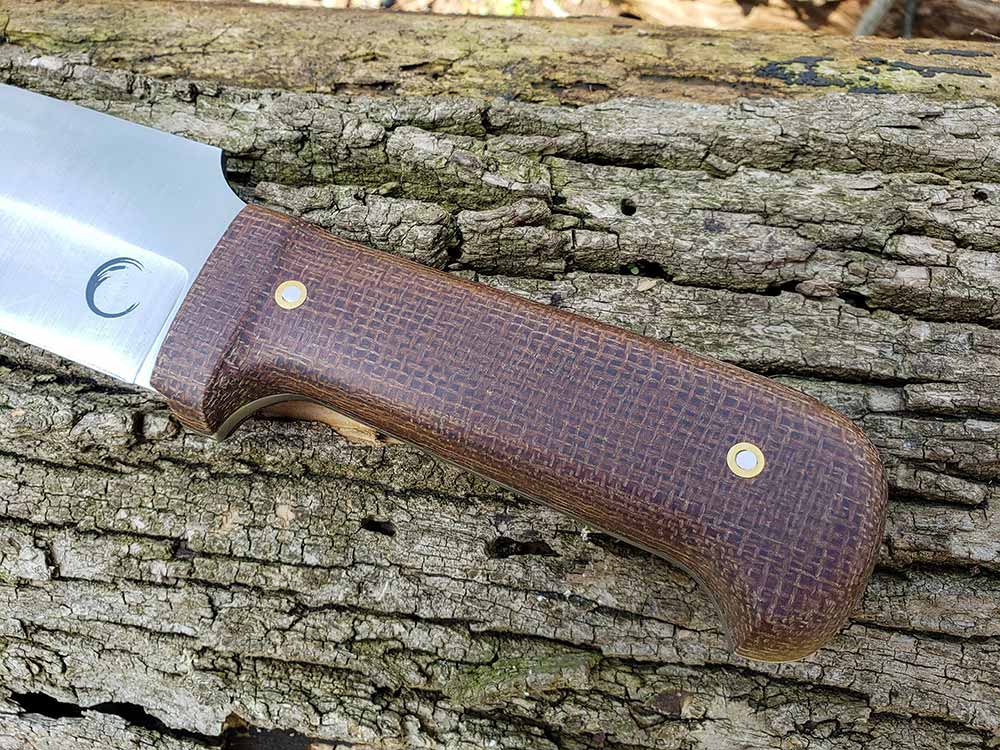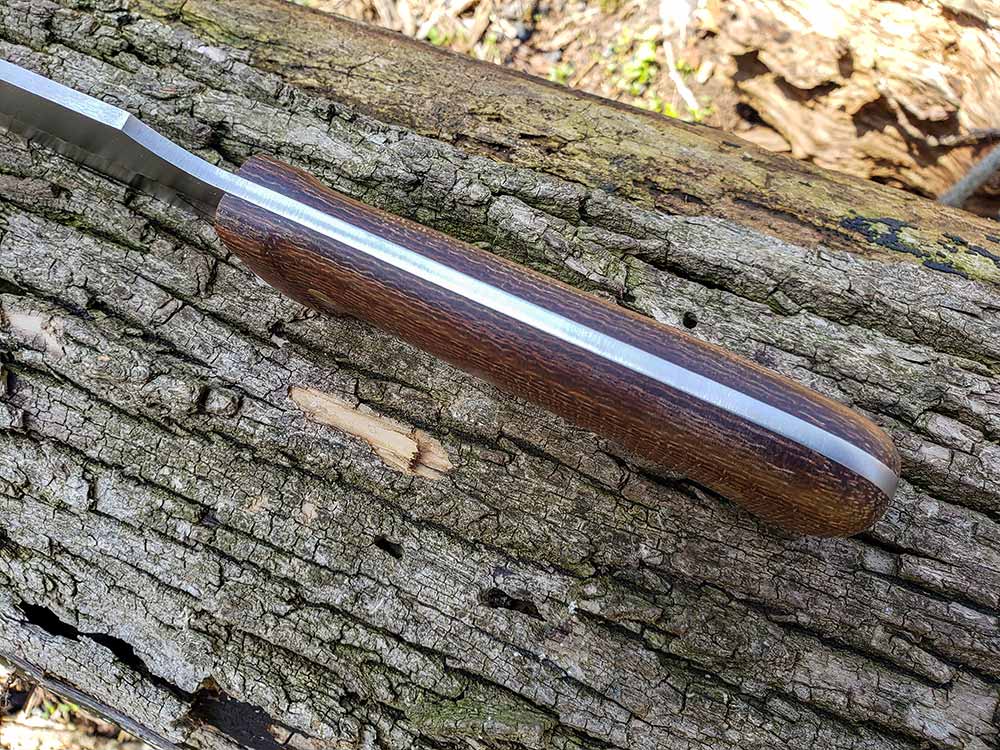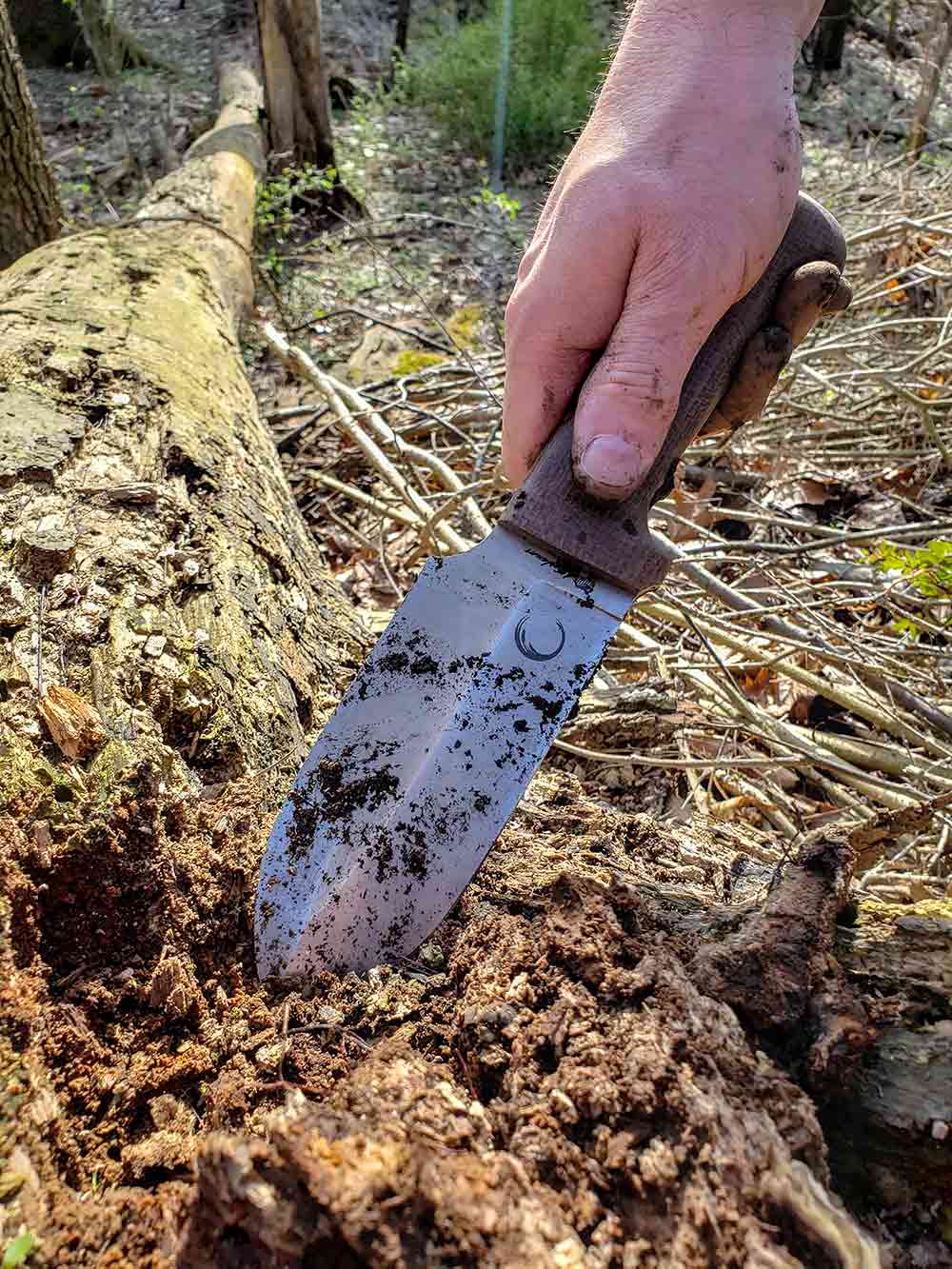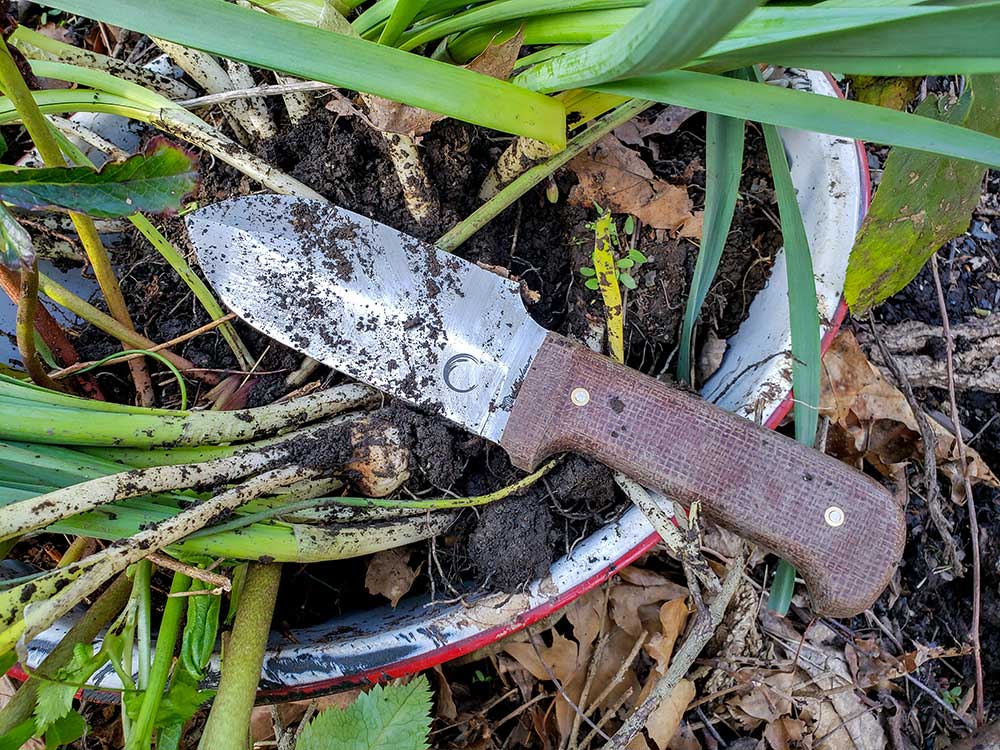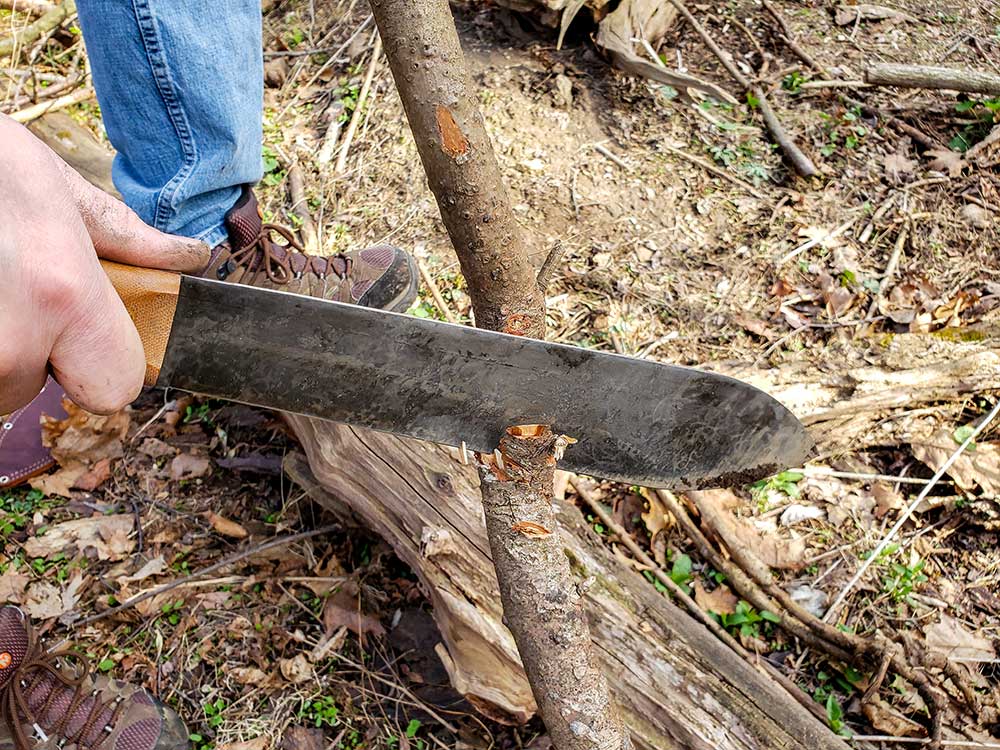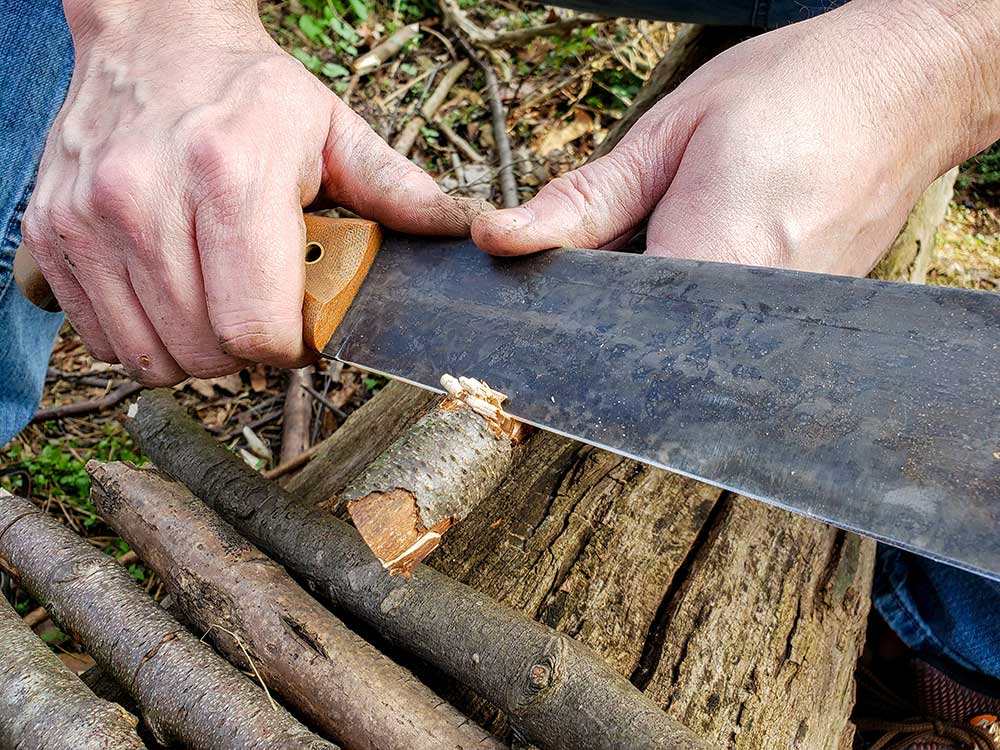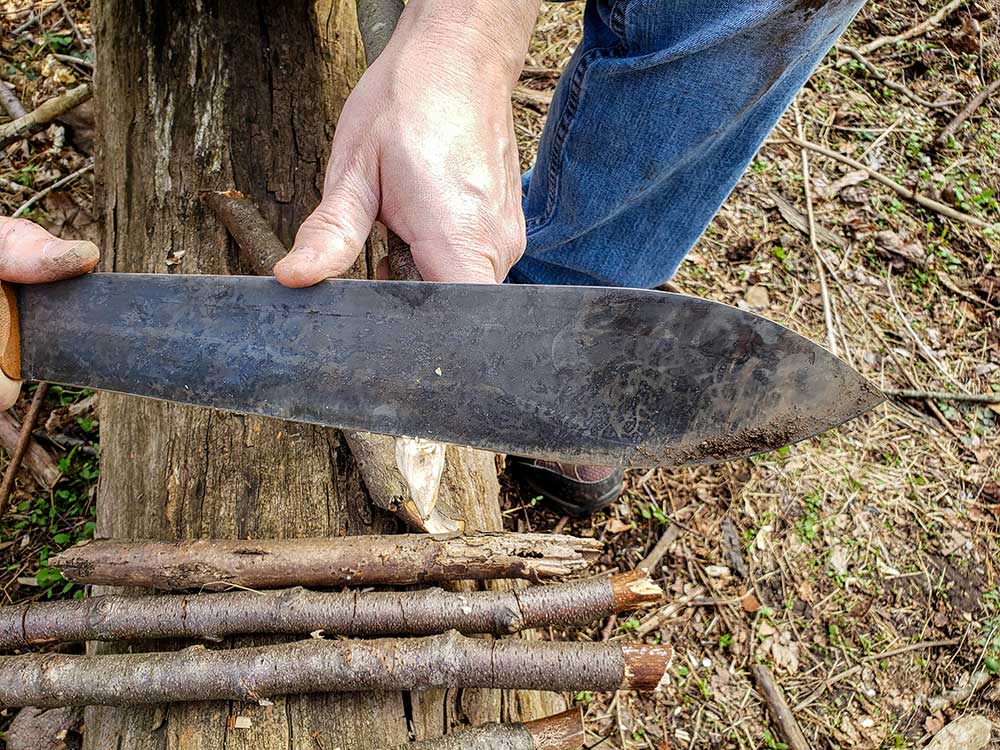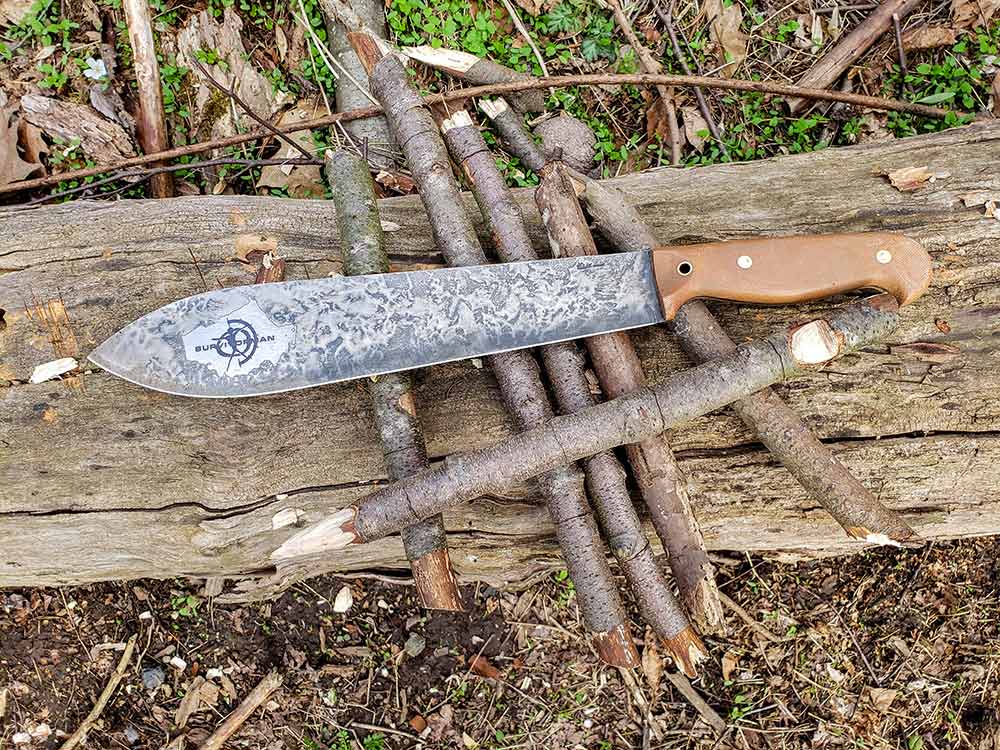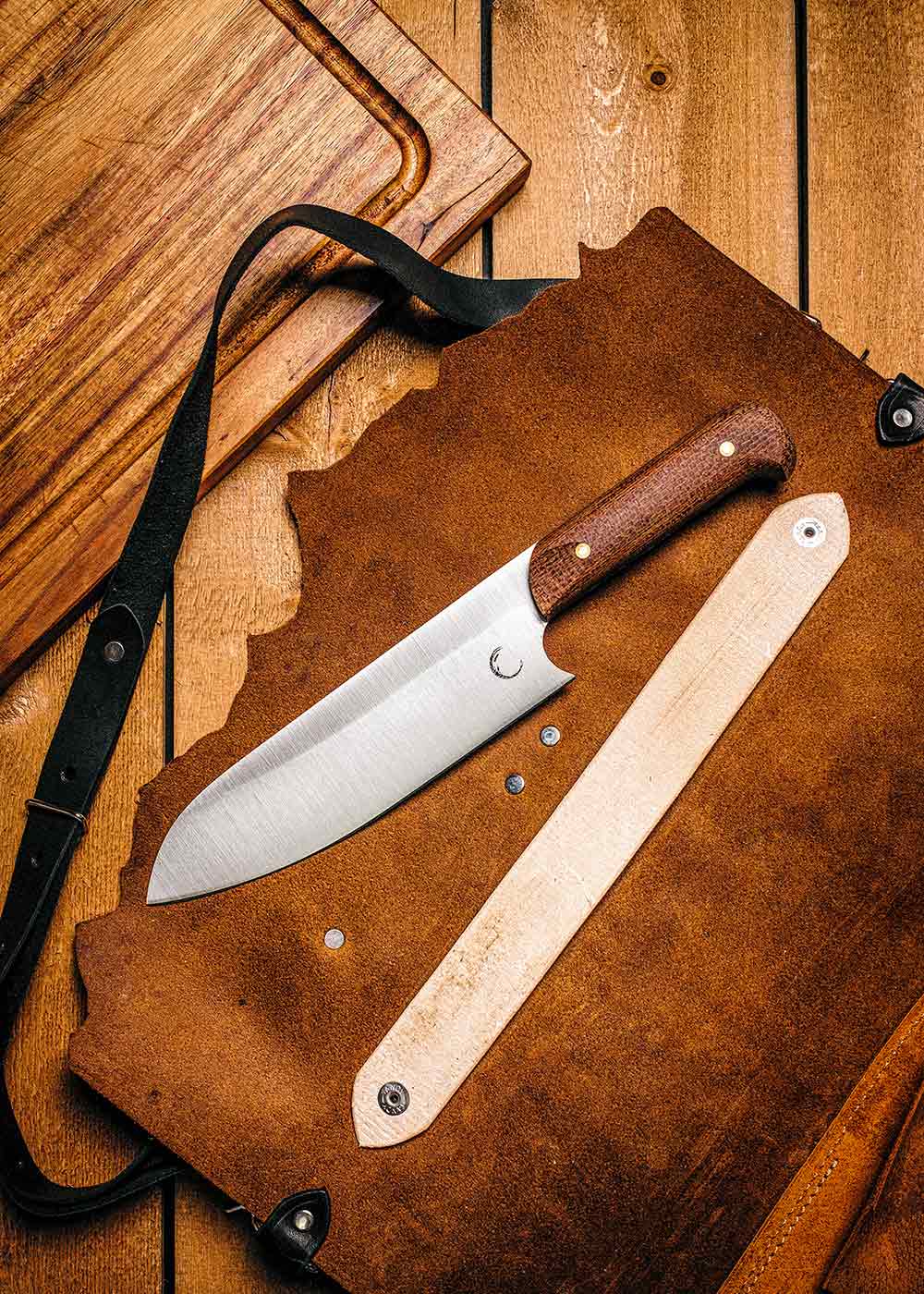WILDERNESS AND KITCHEN TOOLS FROM LES STROUD AND CHEF PAUL ROGALSKI
When I heard Les Stroud had a new project and some new blades to go along with it, I was interested. I’ve used and reviewed Les’s other collaborations over the years and was looking forward to seeing the latest designs.
When I found out that he was doing this set of tools with L.T. Wright Knives, I was even more excited. I’ve known those guys for years and have always been impressed with their work.
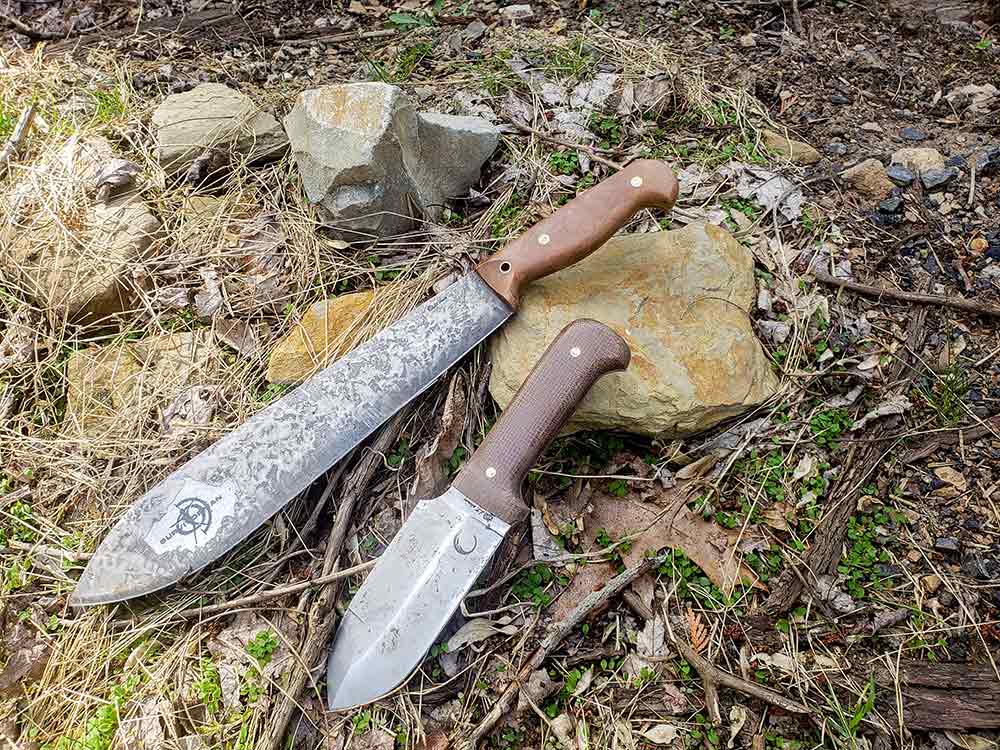
Les Stroud designed both the Foraging Tool and the Survivorman Machete in conjunction with his new PBS television show, Wild Harvest. The author gave both blades a good workout. They’re fun and efficient tools to use.
The new harvest knives revolve around Les Stroud and Chef Paul Rogalski’s new television show Wild Harvest. Wild Harvest is described as a “foraging and culinary journey through the wilds of North America.” It follows Les finding wild edibles and bringing them back to Paul who turns them into amazing meals.
Wild Harvest is broadcast on PBS in the United States, and the first season is also available on Les Stroud’s YouTube channel. Season Two should be airing soon.
Two sets of tools have come out of Wild Harvest so far: a machete and a foraging tool designed by Les, and a set of kitchen and harvest knives and tools designed by Paul. I got ahold of the machete and foraging tool for some hands-on time and got some info on the kitchen and harvest knives.
LES MEETS L.T.
Much like the film industry has the Six Degrees of Kevin Bacon, the knife world has the Six Degrees of Joe Flowers from Global Bushcraft.
Joe introduced Les to the crew at L.T. Wright Knives during the Global Bushcraft Symposium in Canada back in 2019. Later that year, conversations began on making a Survivorman machete and Les mentioned a new show he was going to be filming, Wild Harvest. L.T. offered to send out an Overland Machete along with a Camp Kitchen set for Les and Paul to try out on the show.
After the filming of the first season, they started to work with Paul on the kitchen set and Les on the machete as well as a new foraging tool.

Les Stroud and Chef Paul Rogalski team up on PBS’s Wild Harvest series to make amazing meals from ingredients foraged from around North America. Photo from Les Stroud.
SURVIVORMAN MACHETE
Les Stroud’s Survivorman Machete started out as an L.T. Wright Knives Overland Machete, but went through an evolution of prototyping, testing, and tweaking over two years until Les was satisfied enough to label it with the Survivorman name.
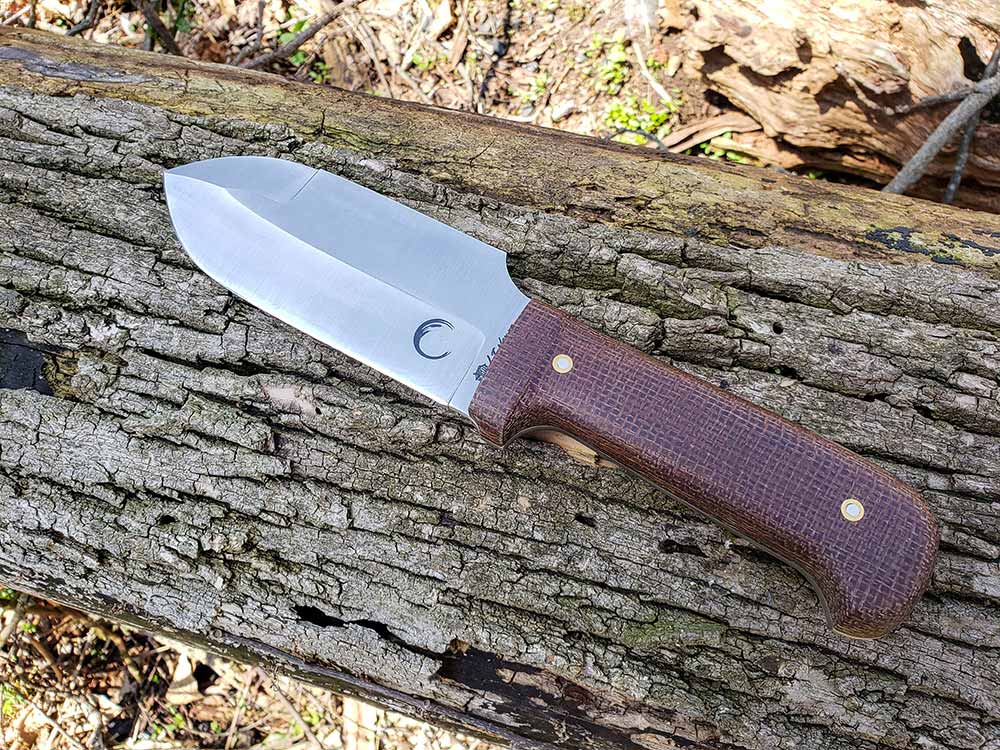
With roots in the Japanese Hori-Hori gardening knife, the Foraging Tool has a big, wide 5 ¾-inch blade of A2 tool steel and a trowel like blade profile. At 11 ½ inches overall it looks shorter due to its wide blade.
The Survivorman Machete measures 19 ¼ inches overall with a 12 7/8-inch sharpened edge. The blade is 3/32-inch thick 1075 high carbon steel with a dual convex grind. There’s a finer convex edge near the handle for carving that fades into a more robust chopping convex near the belly that continues through to the tip.
The high carbon steel blade is given some rust and corrosion resistance using a two-stage food safe patina. The Survivorman logo is emblazoned on the flat of the blade towards the tip.
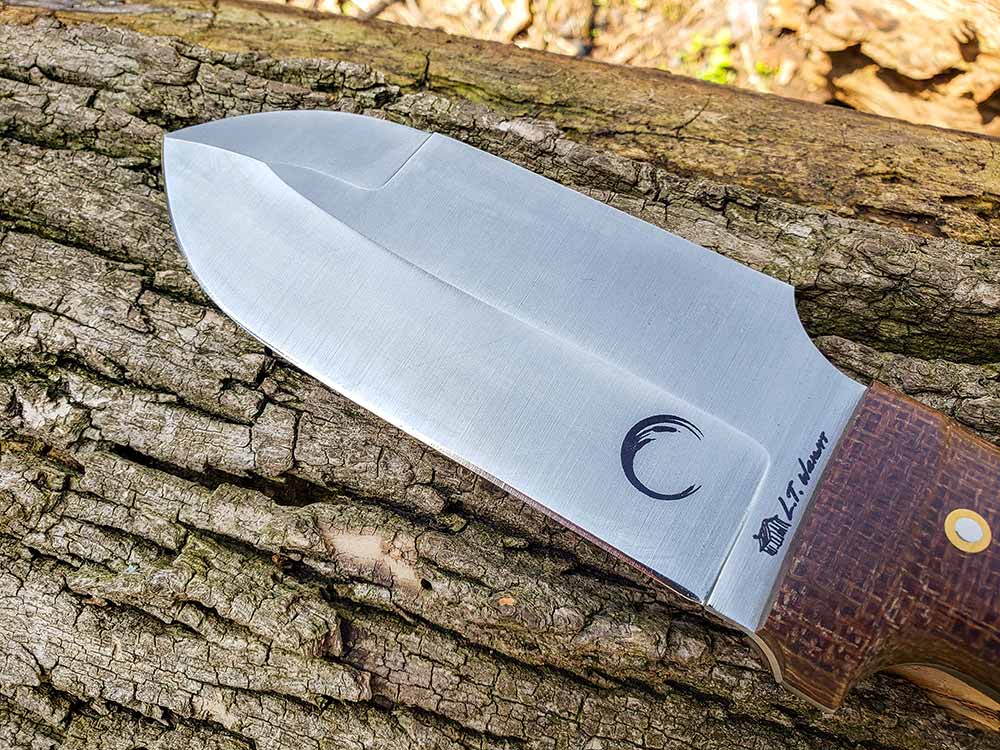
The Foraging Tool carries the Wild Harvest logo on the blade and L.T. Wright Knives logo on the tang.
The 6 ¼-inch handle of natural canvas Micarta is both chemically and mechanically attached to the knife with marine-grade epoxy, stainless screws, and brass nuts. It has a very comfortable, contoured handle with a forward lanyard hole.
The Survivorman Machete comes with a very well-made JRE Industries ambidextrous dangler sheath that has a set of removable dual belt loops as well as a large D-ring and multiple lashing points. MSRP on the Survivorman Machete is $269.
Wild Harvest Foraging Tool
Les’ Wild Harvest Foraging Tool started life as a traditional Japanese Hori-Hori, which is a kind of a mix of knife and trowel frequently used for gardening. The design evolved through testing into a much more rugged tool that maintained the heart and purpose of the Hori-Hori.
The Foraging Tool is made from a single chunk of 5/32-inch-thick A2 tool steel with a saber grind. It has a broad spear-point blade with an unsharpened swedge that gives a good profile for plunging into even hard soil or clay. The A2 tool steel makes for a very rugged blade that’s still easy to sharpen in the field.
The Tool measures 11 ½ inches overall with a 5 ¾-inch sharpened edge. The brown burlap Micarta handles are both chemically and mechanically attached to the knife with marine-grade epoxy, stainless screws, and brass nuts.
The tool comes with the Wild Harvest logo on the presentation side and Les’ initials on the opposite side. MSRP on the Foraging Tool is $336.
FIELD WORK
I had a couple of nice spring days to take the Wild Harvest tools out and put them through their paces. The Survivorman Machete is a handy size to strap to your pack or wear on your belt if you’re going to be using it a lot around the camp or homestead.
The JRE leather sheath is top quality and allows for a variety of carry and mounting methods.
“When you work with the Survivorman Machete and the Wild Harvest Foraging Tool, you can tell that a lot of thought and experience went into the designs.”
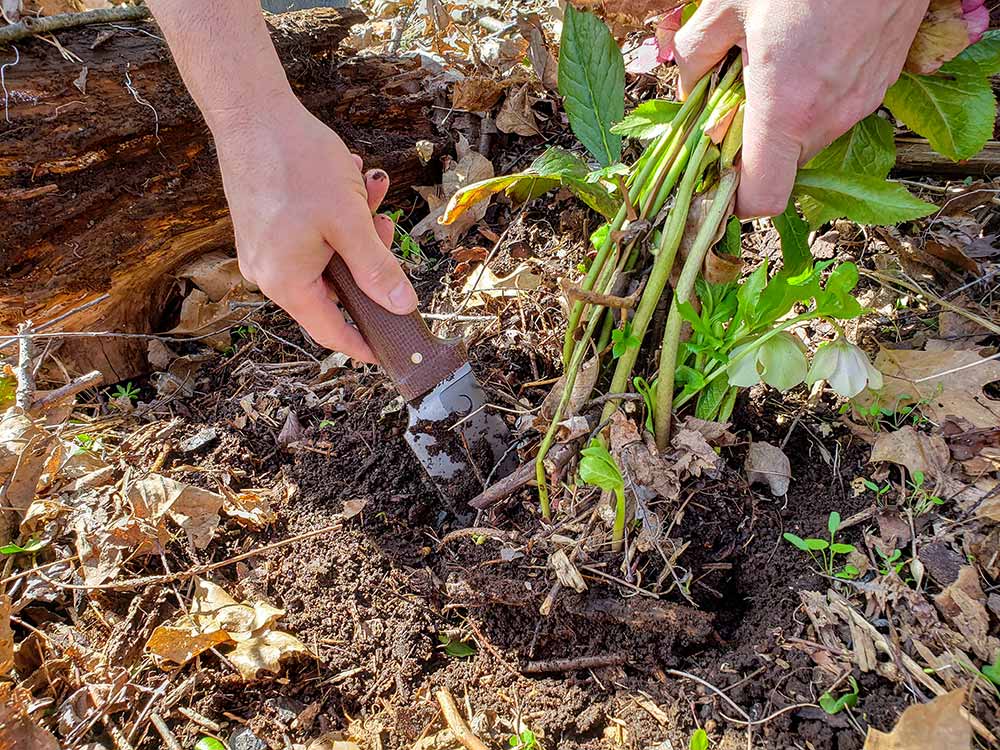
Dig in! The Foraging Tool is made to dig, so don’t hesitate on plunging that blade into the dirt. It does a good job of moving dirt and cutting through roots to help harvest plants.
The Micarta handle on the machete is well contoured and extremely comfortable. It’s long enough for even the biggest gloved hands and allows for a variety of grips. You can easily choke up on it for detail work, or choke back and give yourself a little bit more leverage for snap cuts or reach if needed.
The dual grind gives you a great edge near the handle that worked well for carving, while the more robust grind on the rest of the blade held up well to chopping and incidental ground contact.
I used the machete to clear jagger bushes in the woods near my house. “Jagger” is a Western Pennsylvania catch-all word for any number of thorny plants. I had to look up what people called them in other parts of the country because around here they’re jagger bushes.
Either way, the Survivorman Machete did a nice job on them. Snap cuts were easy and the keen edge sliced through them with ease. I had enough length to the blade too to fling aside the cut pieces and get them off the trail without having to touch them.
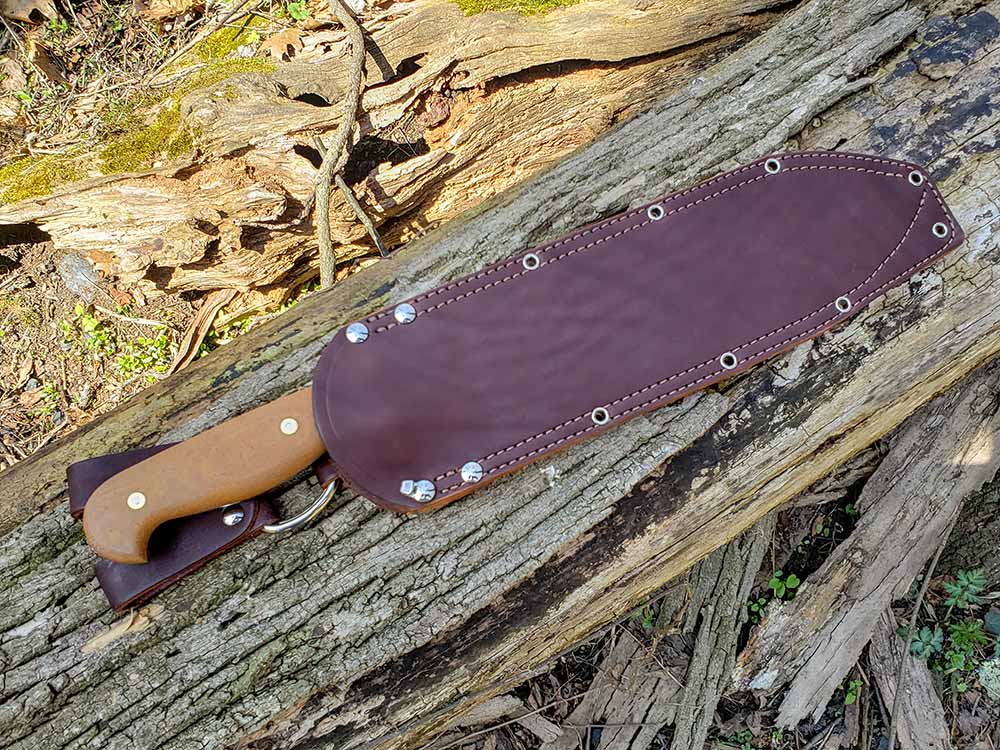
The machete comes with a top-quality leather sheath from JRE Industries out of Schaumburg, Illinois.
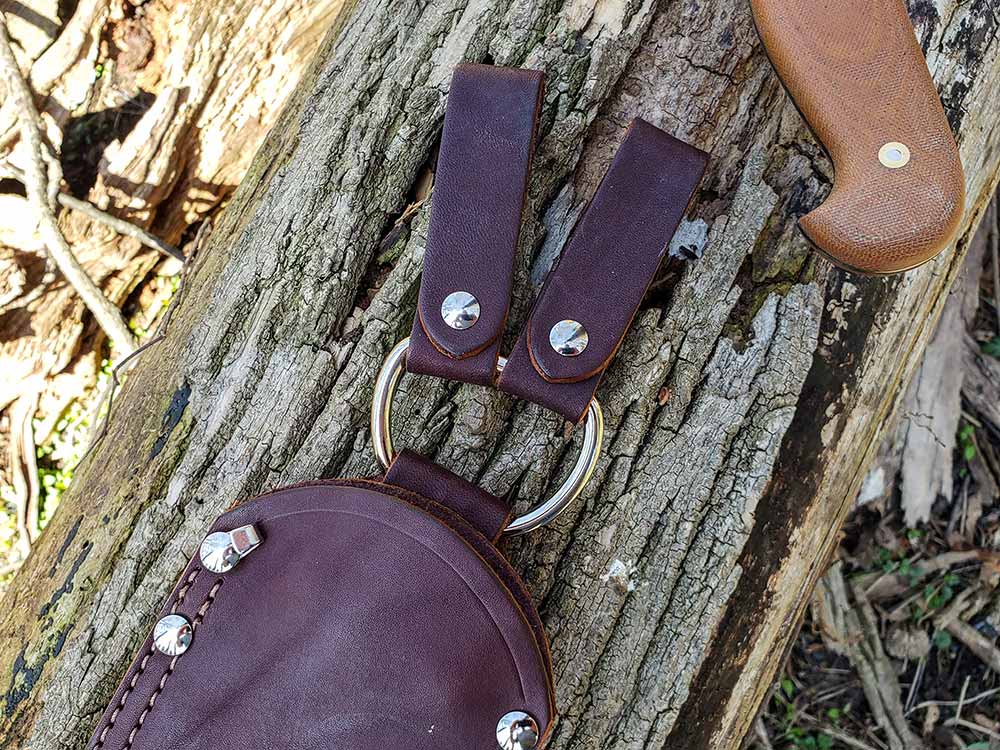
The JRE sheath for the machete has removable danglers that allow a variety of carry and attachment options.
I also cut up a bunch of branches in the 1-inch diameter range that would be good for kindling or shelter building. I sharpened some stakes as well, which is usually one of the first things I do when I hit camp.
My buddies laugh at me sometimes for that, but we haven’t gotten attacked by vampires yet, so who gets the last laugh there?
When notching and carving the stakes, I had surprisingly good control for this being such a large blade, thanks in large part to the excellent handle design, and thin blade grind near the handle.
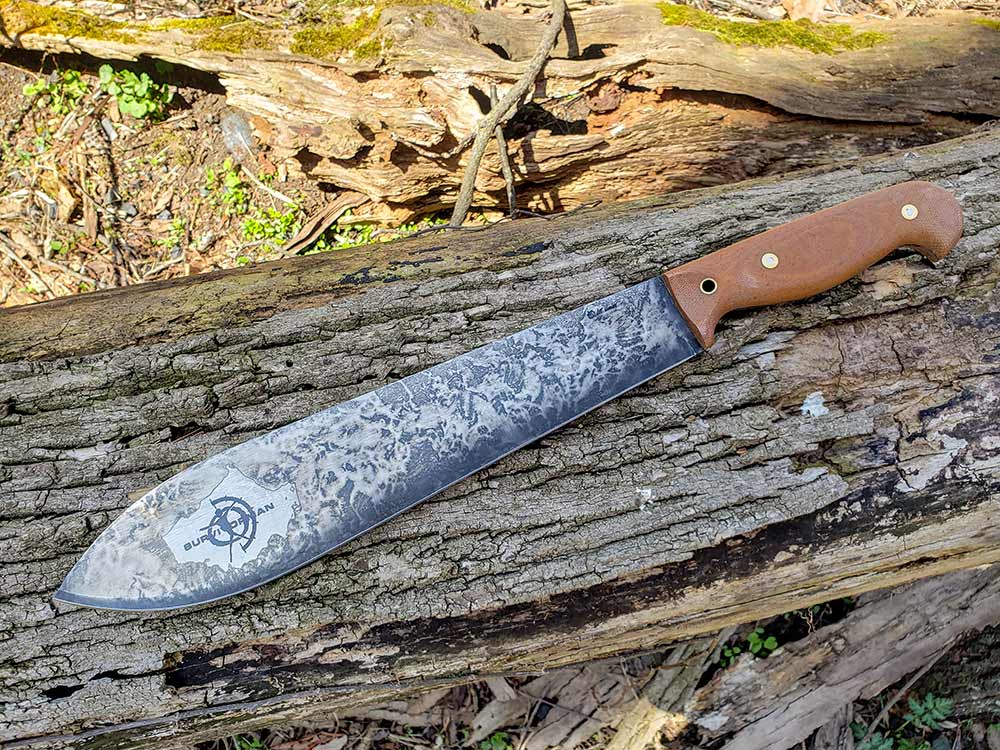
The Survivorman Machete is a little over 19 inches in length with a blade that’s just shy of 13 inches. The blade is made from 1075 high carbon steel and is finished with a two-stage, foodsafe patina. The Survivorman logo is proudly emblazoned on the flat of the machete blade.
Once I cleared my path into the woods, I pulled out the Foraging Tool to see what it could do. As it didn’t come with a sheath, I hand-crafted an artisan-quality cardboard and duct tape blade cover so that I could safely carry the tool in my daypack. Ask anyone who knows me, I’m a master with cardboard and duct tape. Leather is a passing fad; I’m ahead of the curve on its replacement.
The Foraging Tool is a neat critter. It has its obvious Hori-Hori roots, but it’s extremely sturdy and well made.
The wide blade is almost shovel-like and in fact it works great for digging. I used it to harvest some flower bulbs for my wife. I’ll admit that I hesitated a minute before plunging the Foraging Tool into the ground because it really is a finely built custom blade. It’s made for work, though, so I got over that and dug in with vigor.
“They aren’t flashy, but they simply work well, and the execution of the designs by L.T. Wright Knives is flawless.”
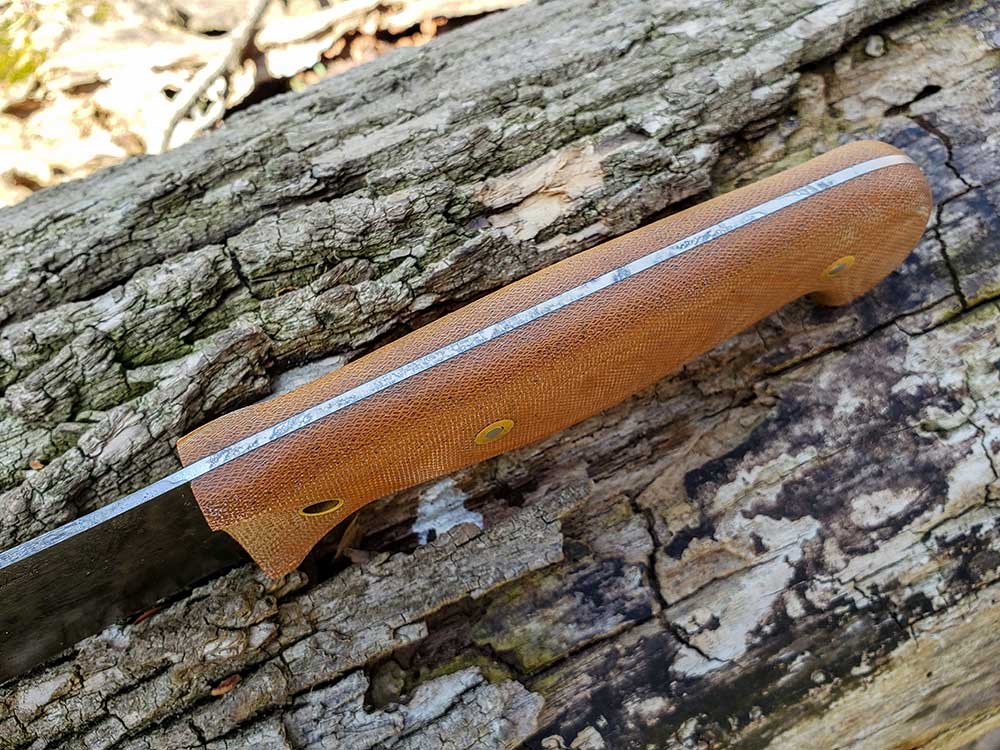
The Micarta scales of the machete have a fit and finish well above what most people would expect for a machete.
The big handle is comfortable and worked well with or without work gloves and in a variety of holds. Harvesting plants is obviously a primary task for it, but I was thinking that it would also work great for digging cat holes, making drainage trenches around your tent or shelter, or digging fire pits.
I also attacked some rotten logs to get to some dry punk for fire starting and to look for insects for bait or to eat in a pinch, but I’m no Paul Roglaski, so I didn’t sample the bugs this time.
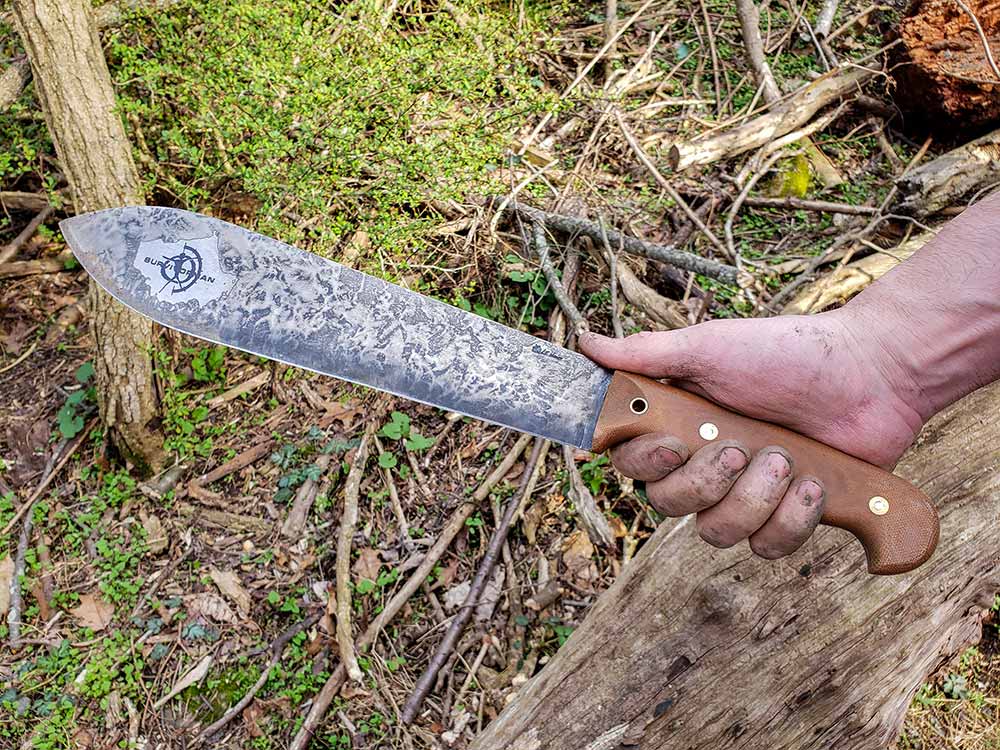
The Survivorman Machete was handy and well balanced. The big, well-contoured handle on the machete made it very comfortable to use, even for extended periods of time.
BOUNTIFUL HARVEST OF BLADES
When you work with the Survivorman Machete and the Wild Harvest Foraging Tool, you can tell that a lot of thought and experience went into the designs. They aren’t flashy, but they simply work well, and the execution of the designs by L.T. Wright Knives is flawless.
The Foraging Tool is fairly unique and that broad blade draws knife nerds like moths to a flame.
As soon as you pull it out, people want to mess with it. With these two tools and maybe a smaller fixed blade or folder, and you’d be extremely well equipped for whatever adventures that the wilderness threw at you.
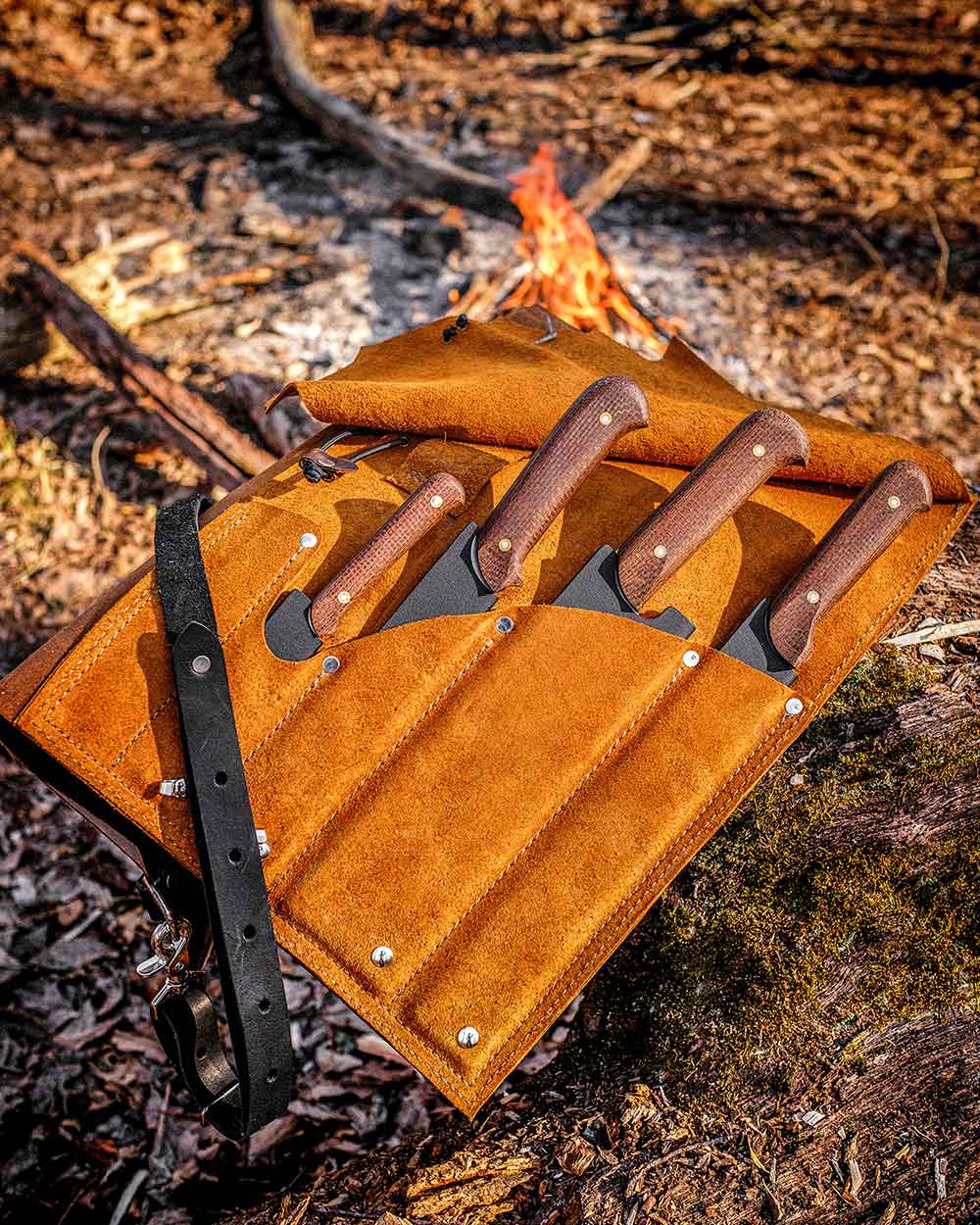
The Wild Harvest Kitchen Set can be carried in the Chef Paul Knife Roll made by JRE Industries. L.T. Wright photo
CHEF PAUL ROGALSKI SIGNATURE COLLECTION
I stuck to my wheelhouse with the field knives for the main part of this article, but I’d be remiss if I didn’t talk about the kitchen side of Wild Harvest and Chef Paul Rogalski’s Signature Collection knives.
Chef Paul Rogalski is the co-owner and chief culinary officer at Calgary’s acclaimed Rouge Restaurant, which is on the prestigious World’s 50 Best Restaurants list. Paul works with locally sourced ingredients and, together with Les, uses that background to create amazing meals with ingredients from the world around us.
Chef Paul’s Kitchen Series consists of four knives: an 8-inch chef knife, a 10-inch slicing knife, a 6-inch boning knife, and a 2 1/8-inch turning knife.
All of the knives are made from AEB-L stainless steel and feature L.T. Wright’s distinctive Grind Thru Cutlery grind. This grind is described as “where the entire knife is tapered from the spine to the cutting edge and then is chisel ground to make a very powerful cutting geometry.”
They have brown burlap Micarta handles that are chemically and mechanically attached to the knife with marine grade epoxy and stainless screws and brass nuts just like L.T.’s field knives. The knives have the Wild Harvest logo on one side of the blade and Chef Paul’s initials on the opposite side.
You can buy the knives individually, with prices running from $185 to $290, but if you buy the whole set, you probably want to check out the Chef Paul Knife Roll to carry them in.
The knife roll is crafted by the artisans at JRE Industries of genuine leather with a live edge so that each roll has unique characteristics. The inner side of the roll is soft to protect the knives and there are custom Kydex inserts molded to each knife in each tool slot.
The Kydex is removable for cleaning. The roll comes with a removable leather strop to keep your edges fine-tuned, and there’s an adjustable and removable carry strap. The Knife Roll is $375 without knives, but if you’re all in on the set, you may as well get the best to carry them.
SPECS
WILD HARVEST FORAGING TOOL
Blade Length: 5 ¾ inches
Blade Steel: A2 tool steel
Grind: Saber grind
Finish: Satin finish
Overall Length: 11 ½ inches
Weight: 15.7 ounces (author’s scale)
Handles: Brown burlap Micarta
Sheath: None
• Handcrafted in Wintersville, Ohio
MSRP: $336
SPECS
SURVIVORMAN MACHETE
Blade Length: 12 7/8 inches
Blade Steel: 1075 high carbon steel
Grind: Dual convex grind
Finish: Food-safe two-stage patina
Overall Length: 19 ¼ inches
Weight: 19.2 ounces (author’s scale)
Handles: Natural canvas Micarta
Sheath: JRE Industries ambidextrous sheath
• Handcrafted in Wintersville, Ohio
MSRP: $269
CONTACT INFO
WildHarvestFilms.com
LTWrightKnives.com
A version of this article first appeared in the Sep/Oct 2022 print issue of Knives Illustrated.

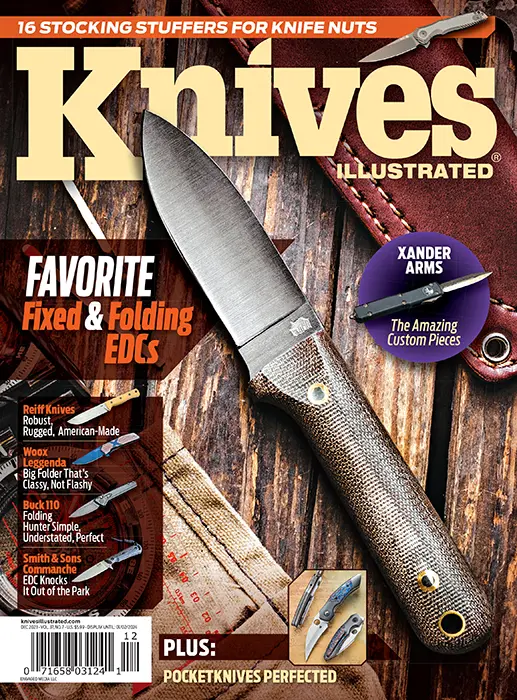 Subscribe / Back Issues
Subscribe / Back Issues